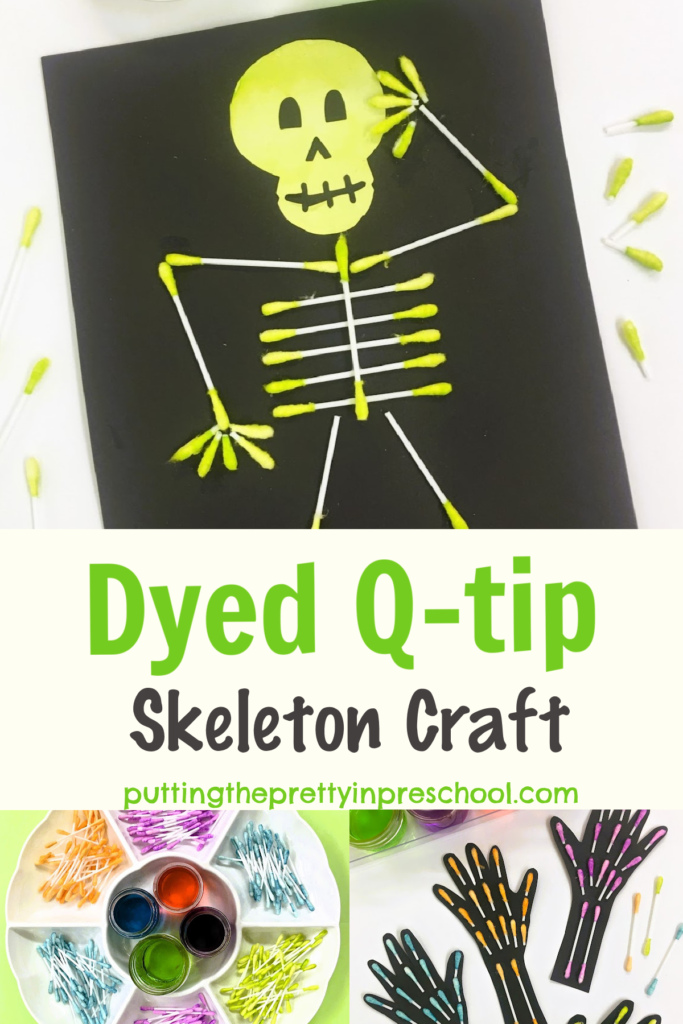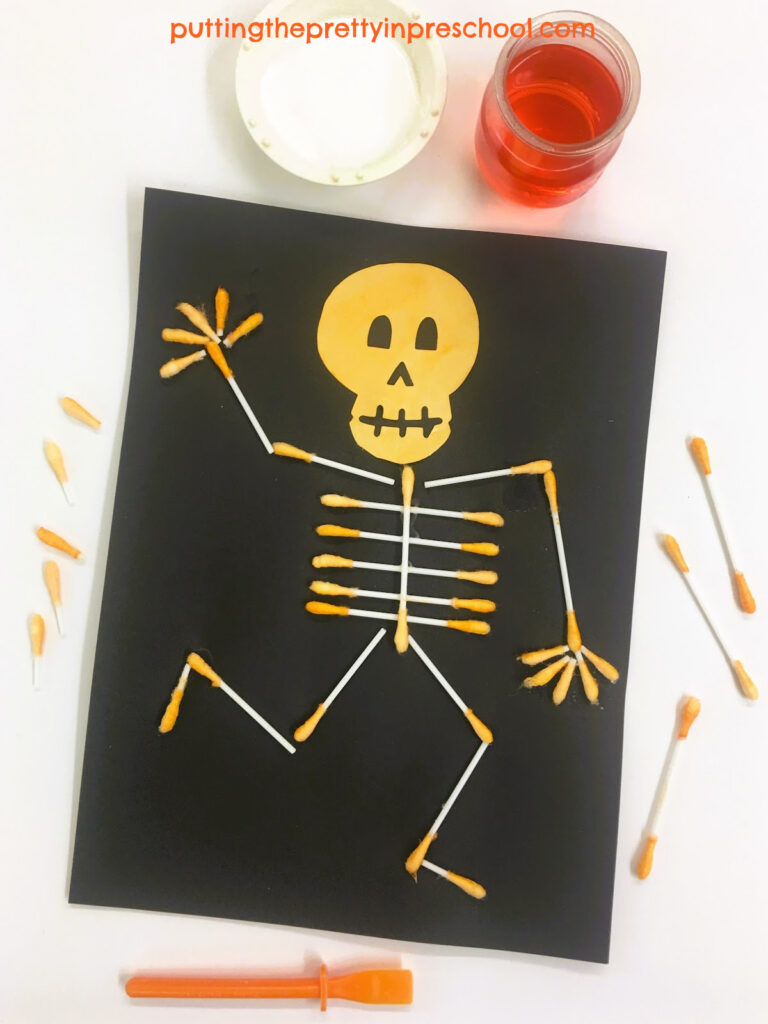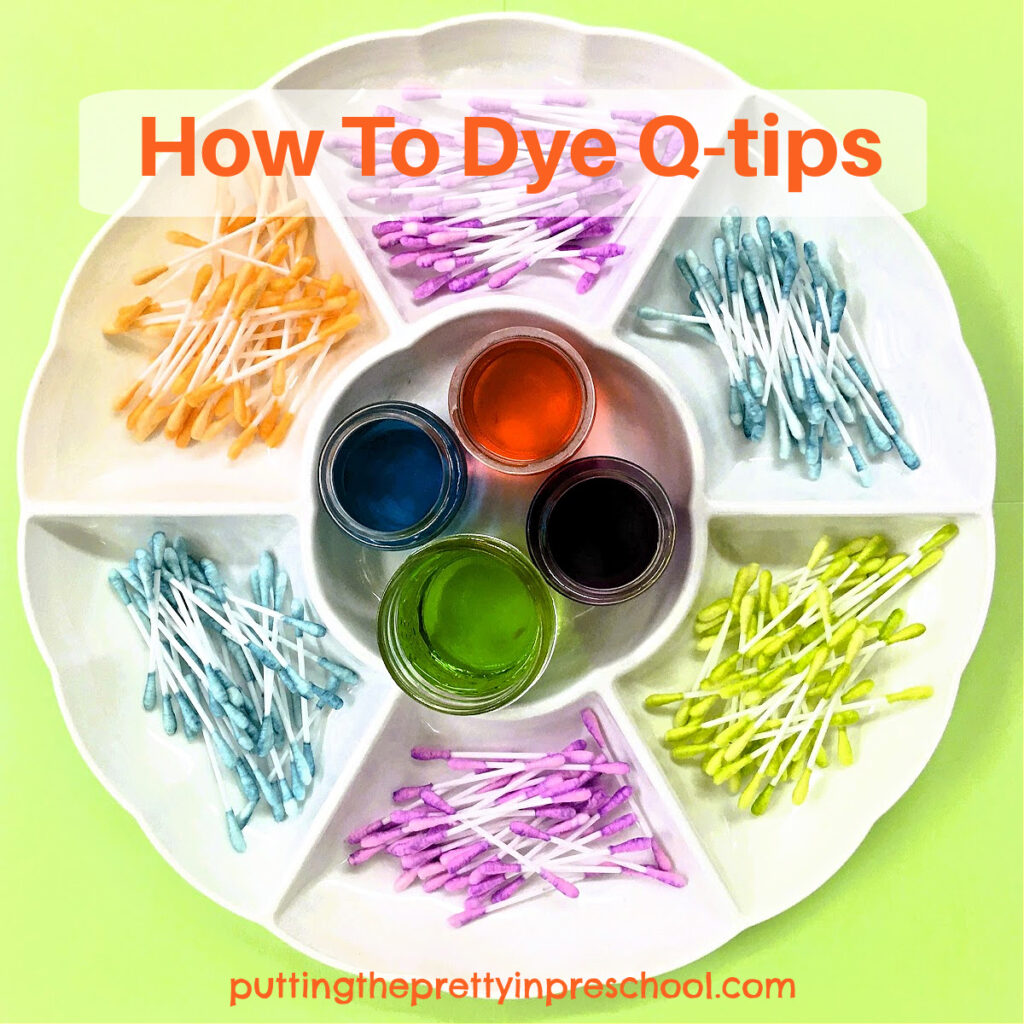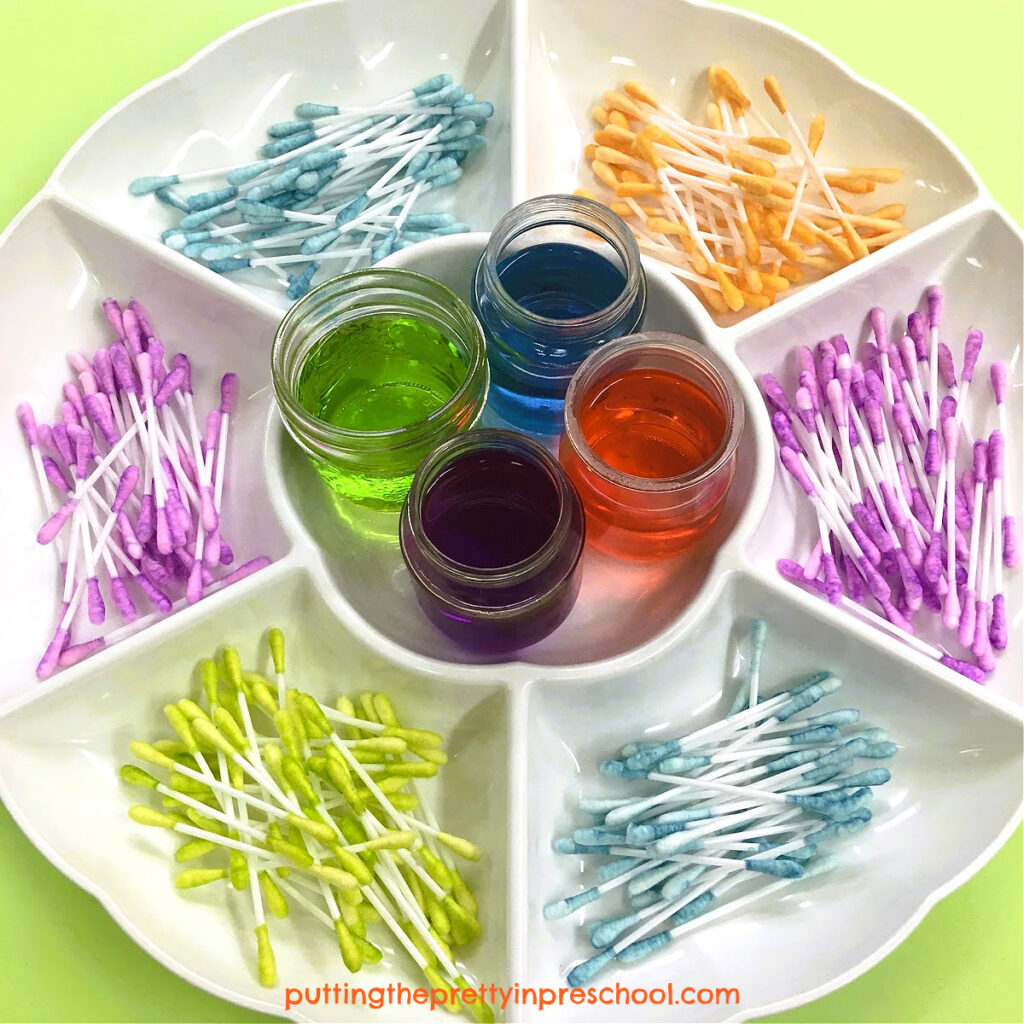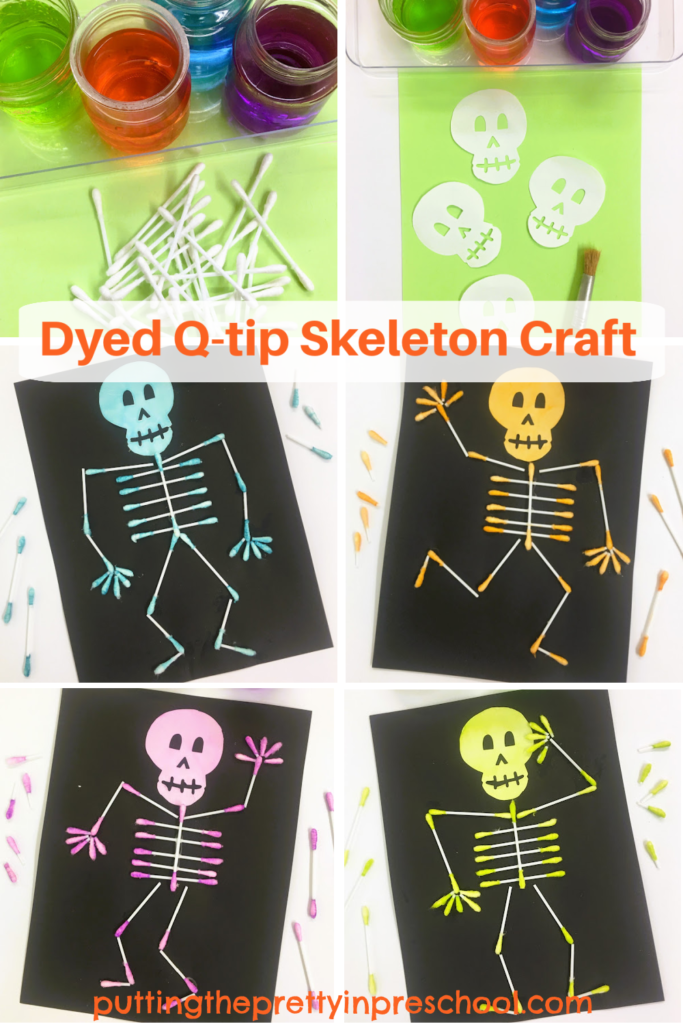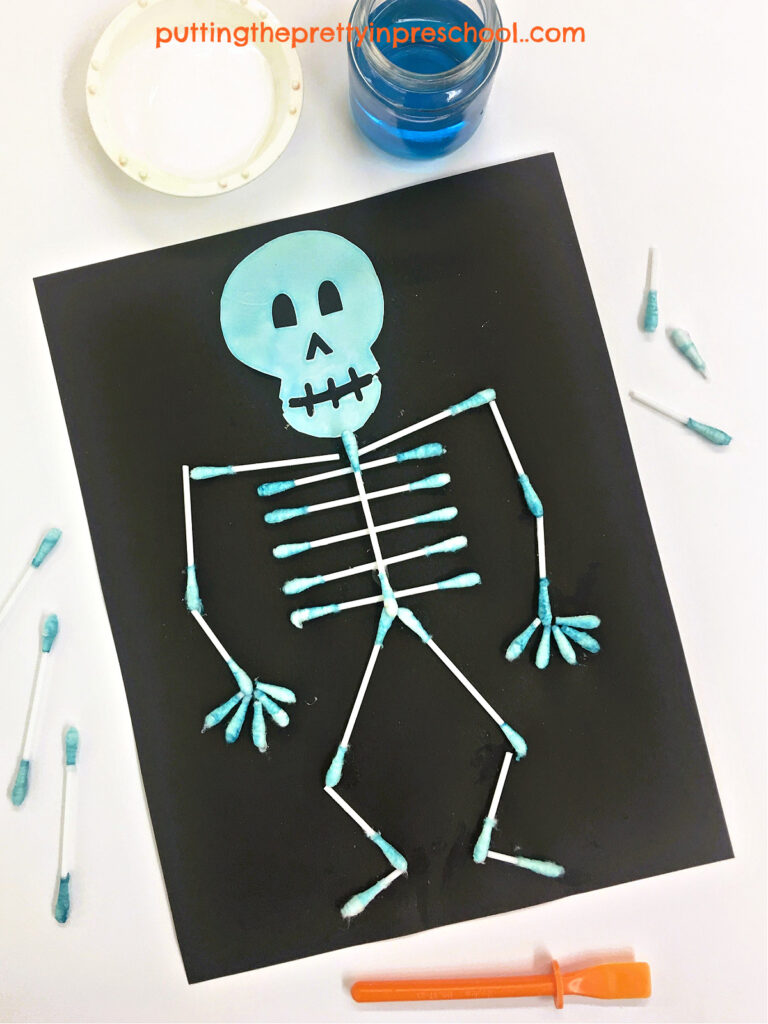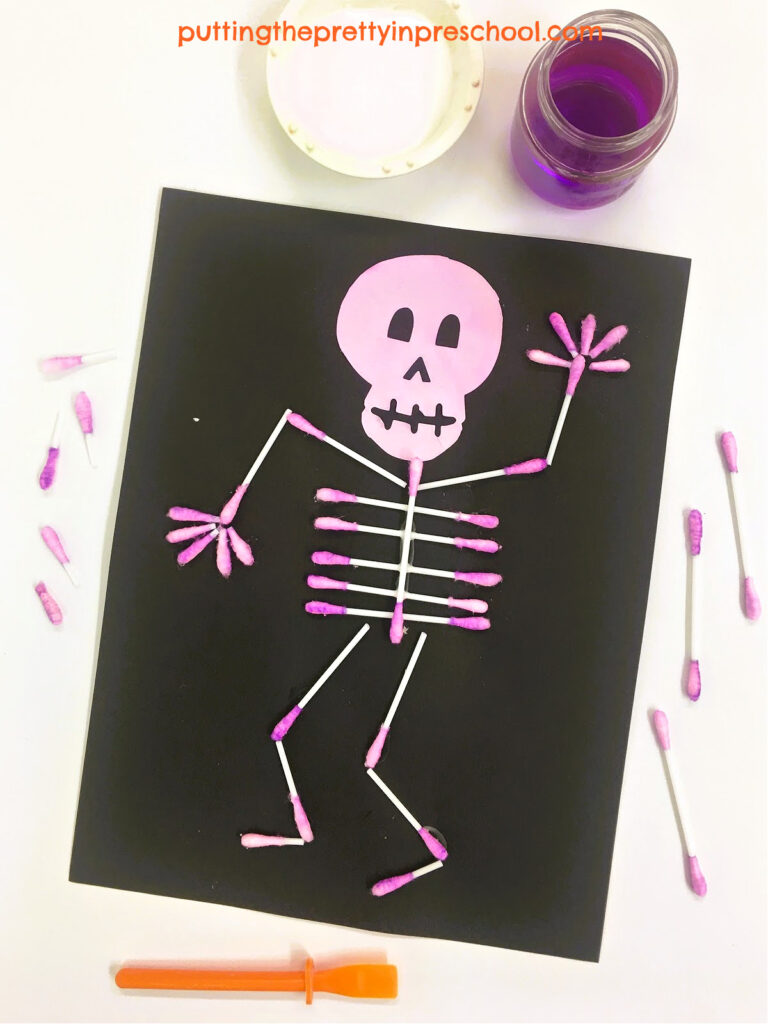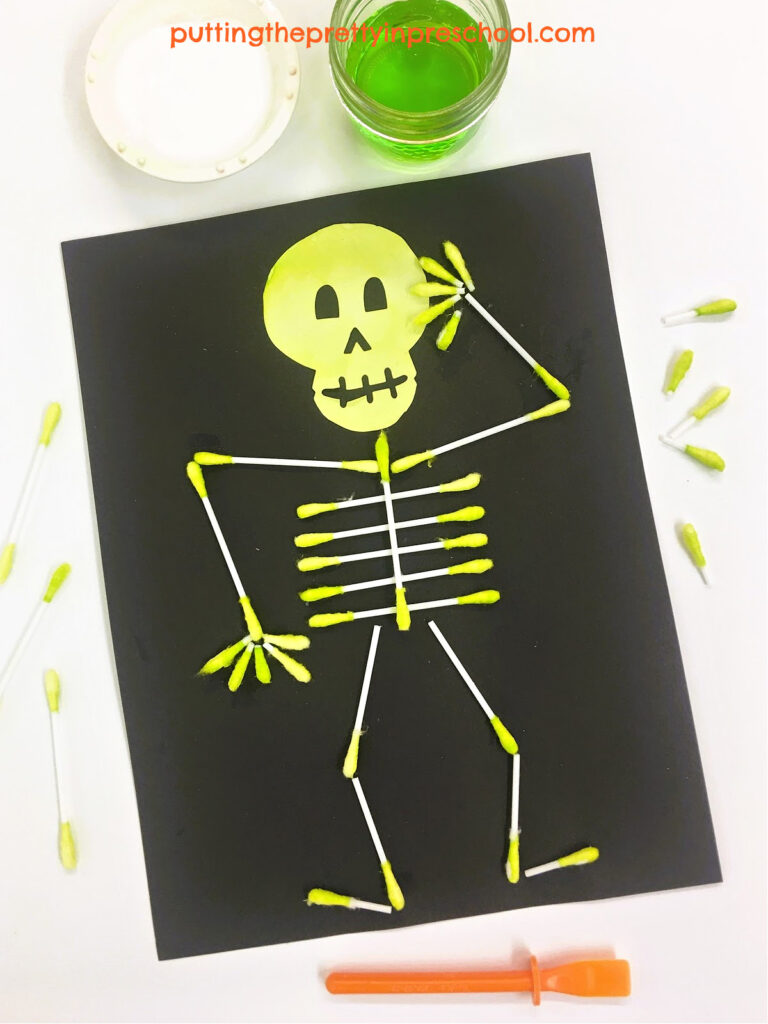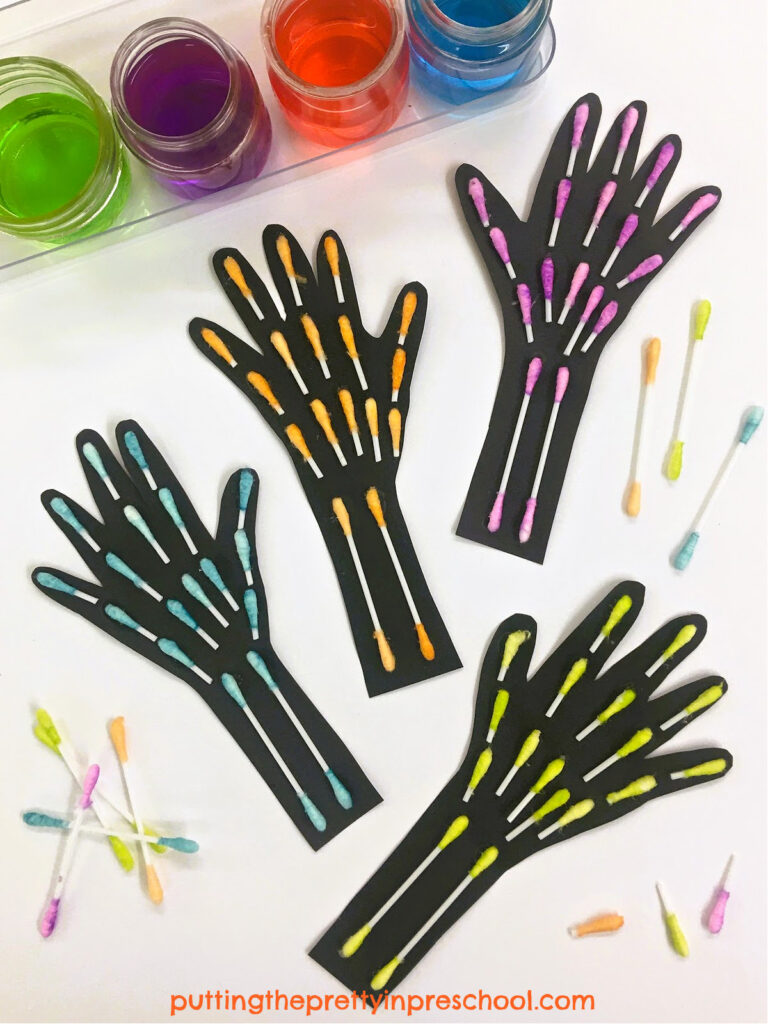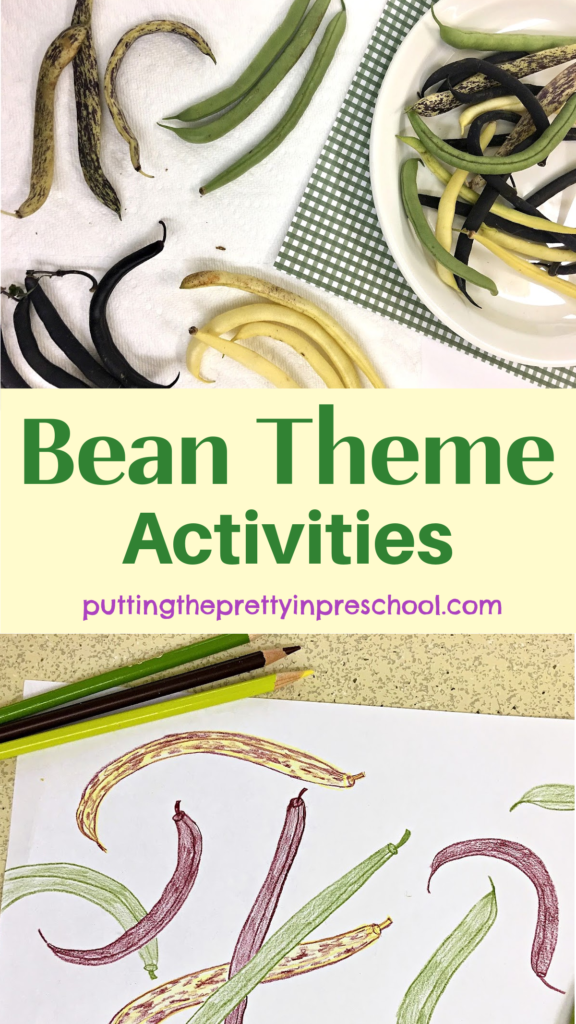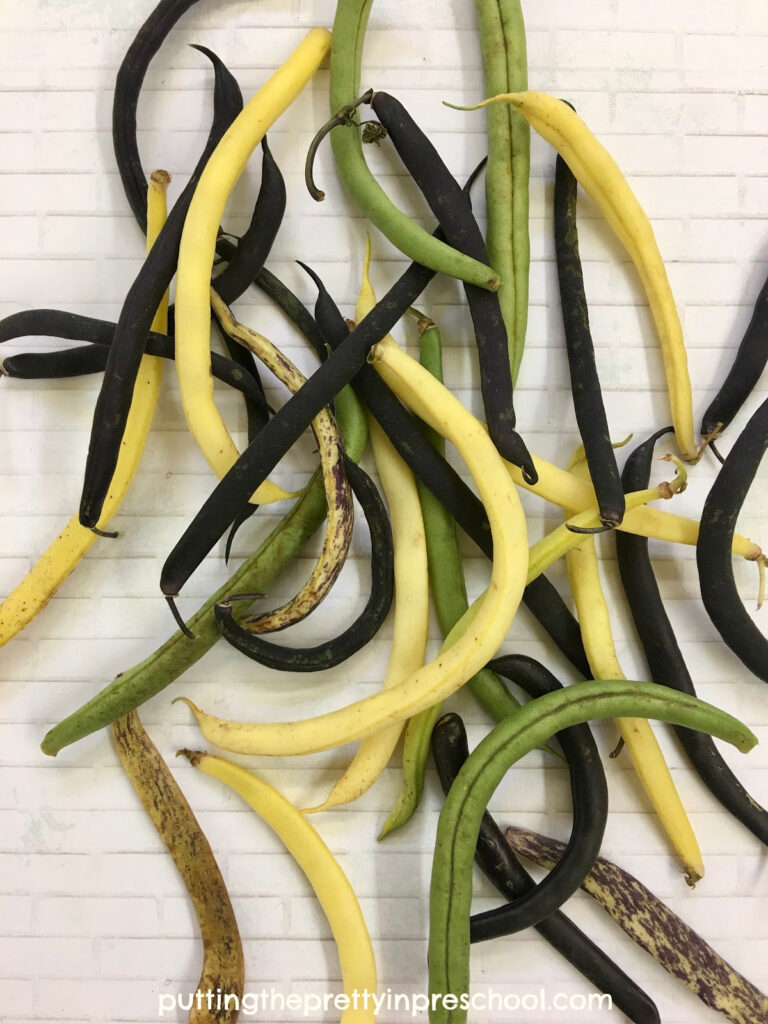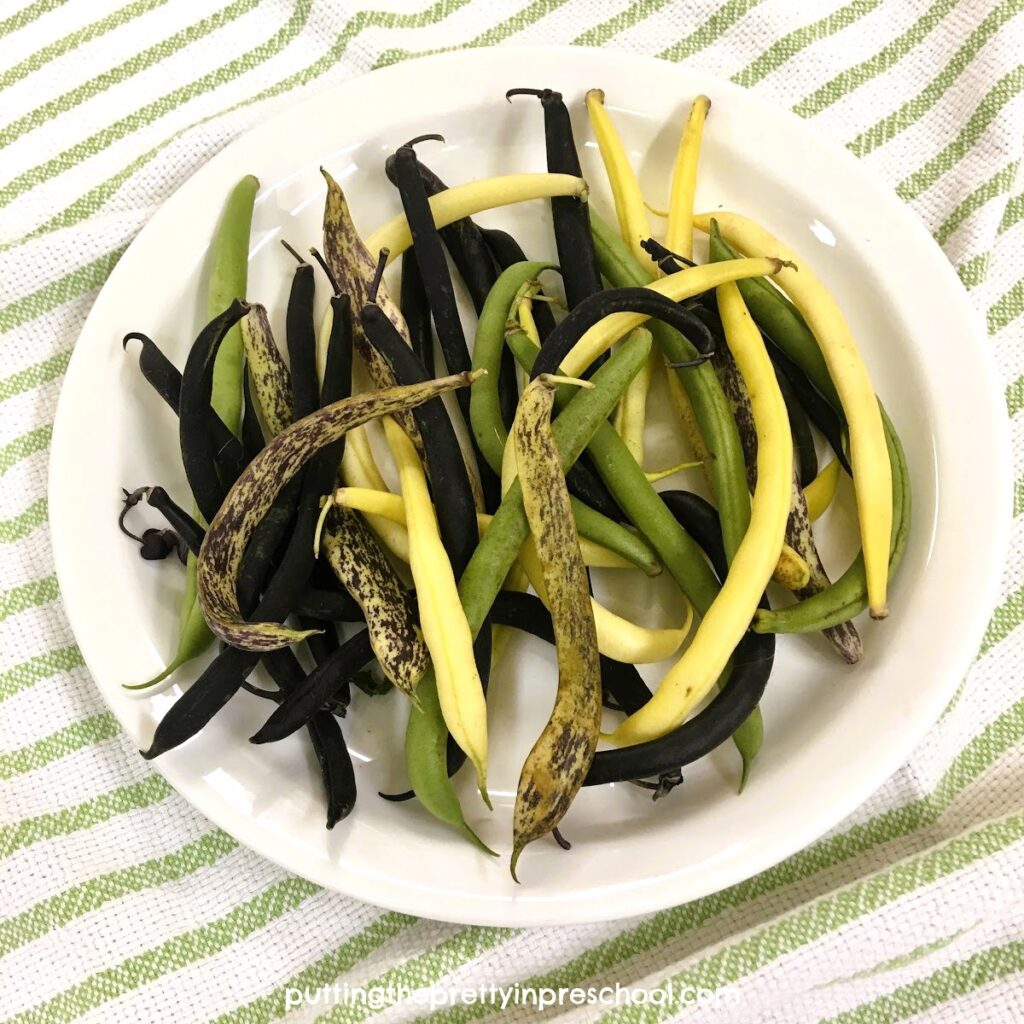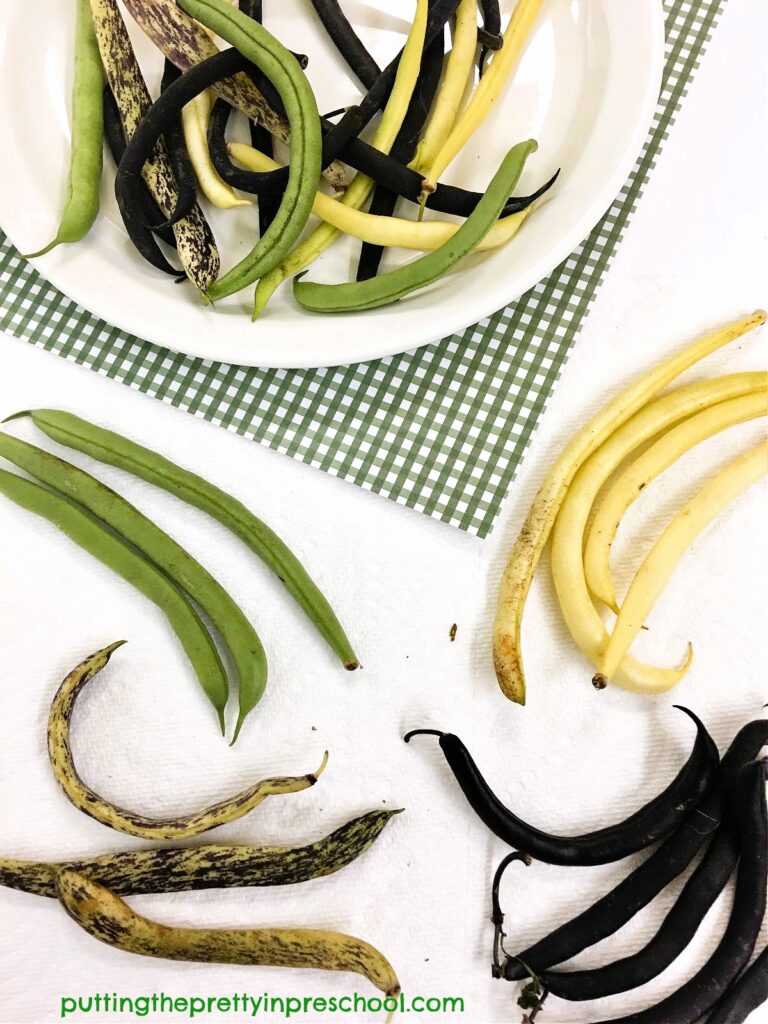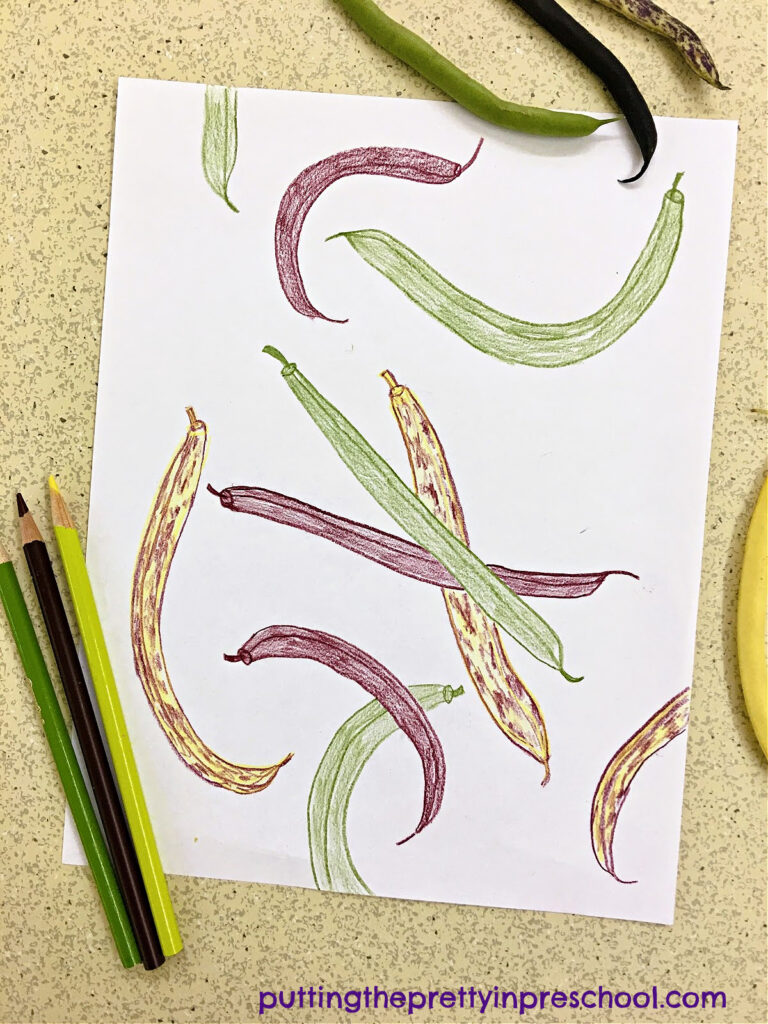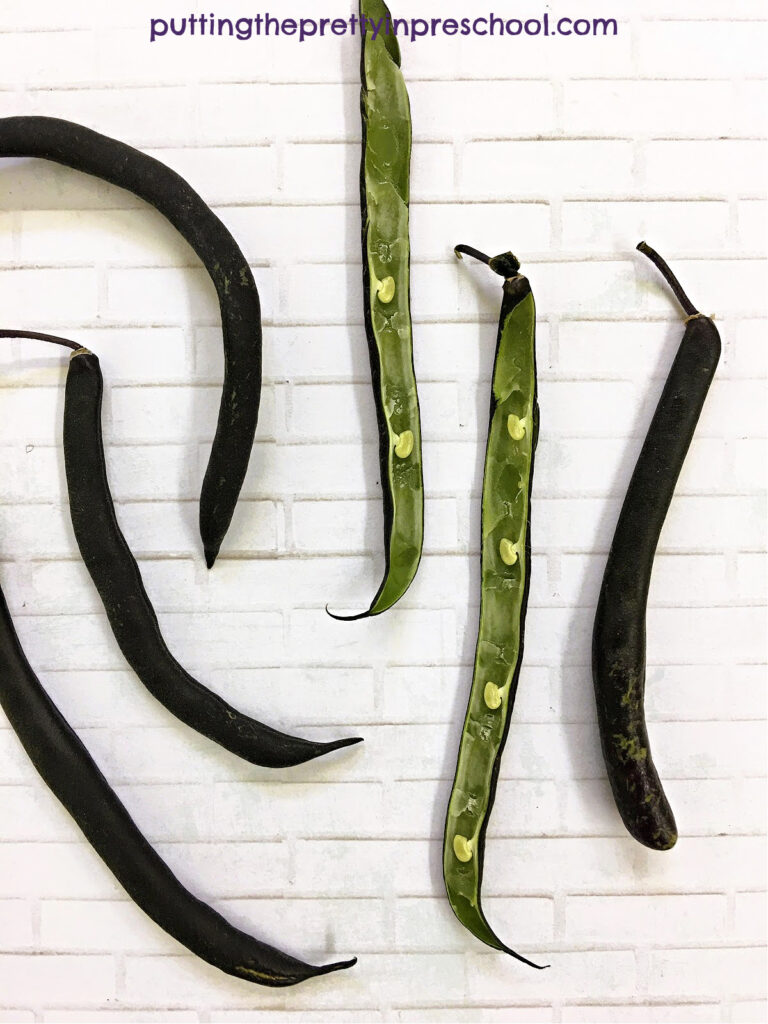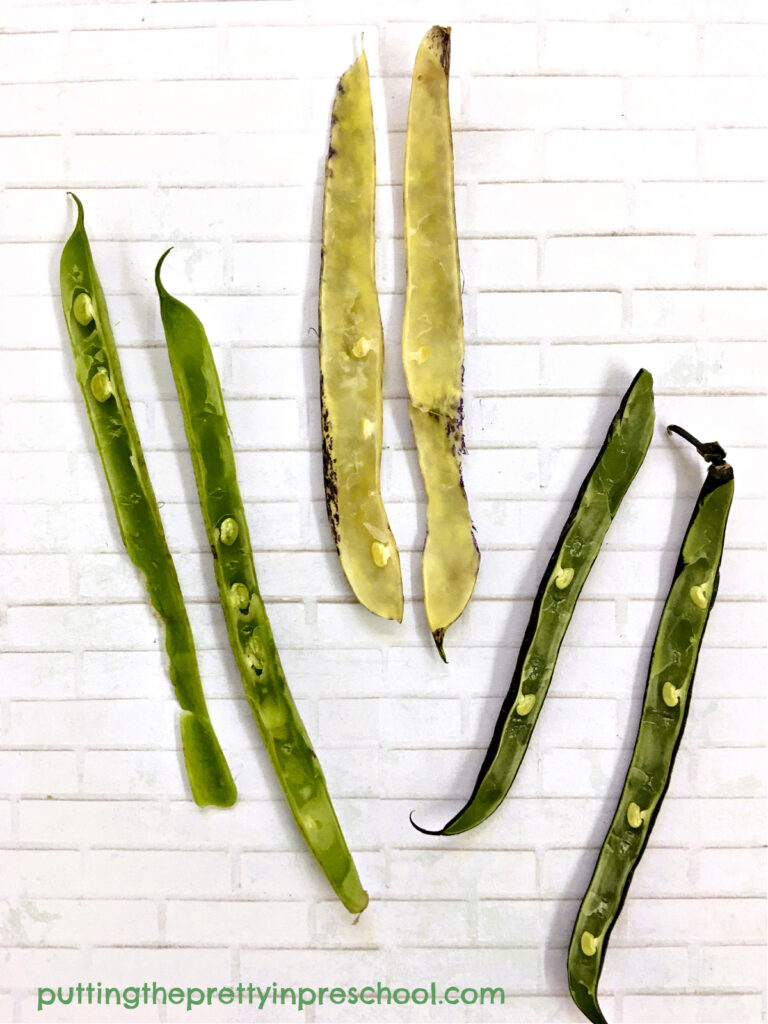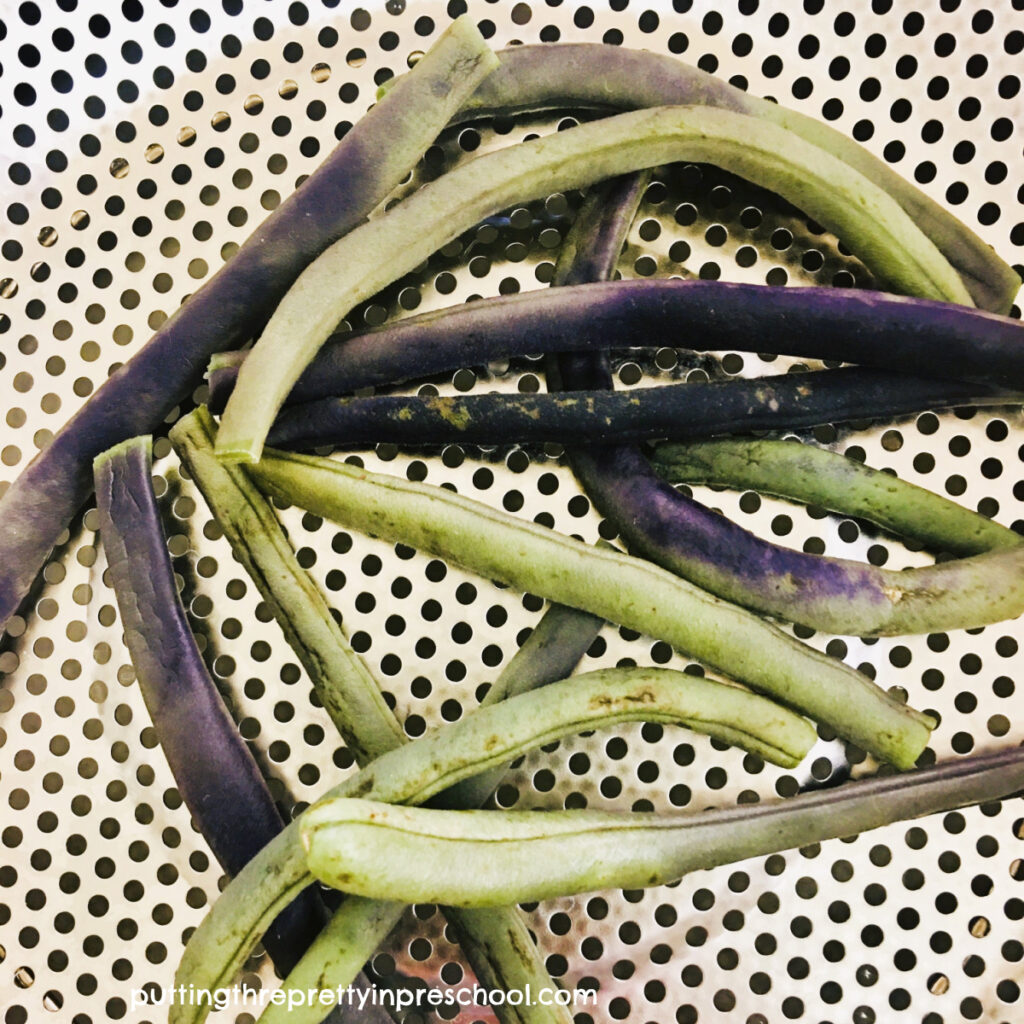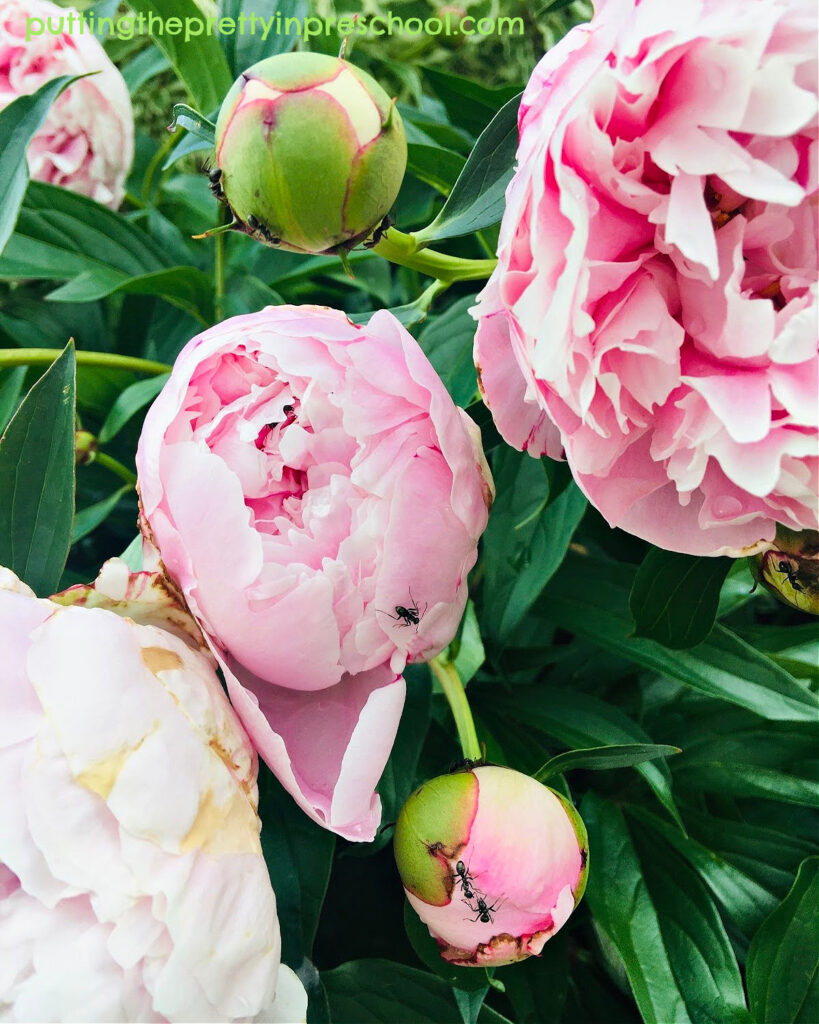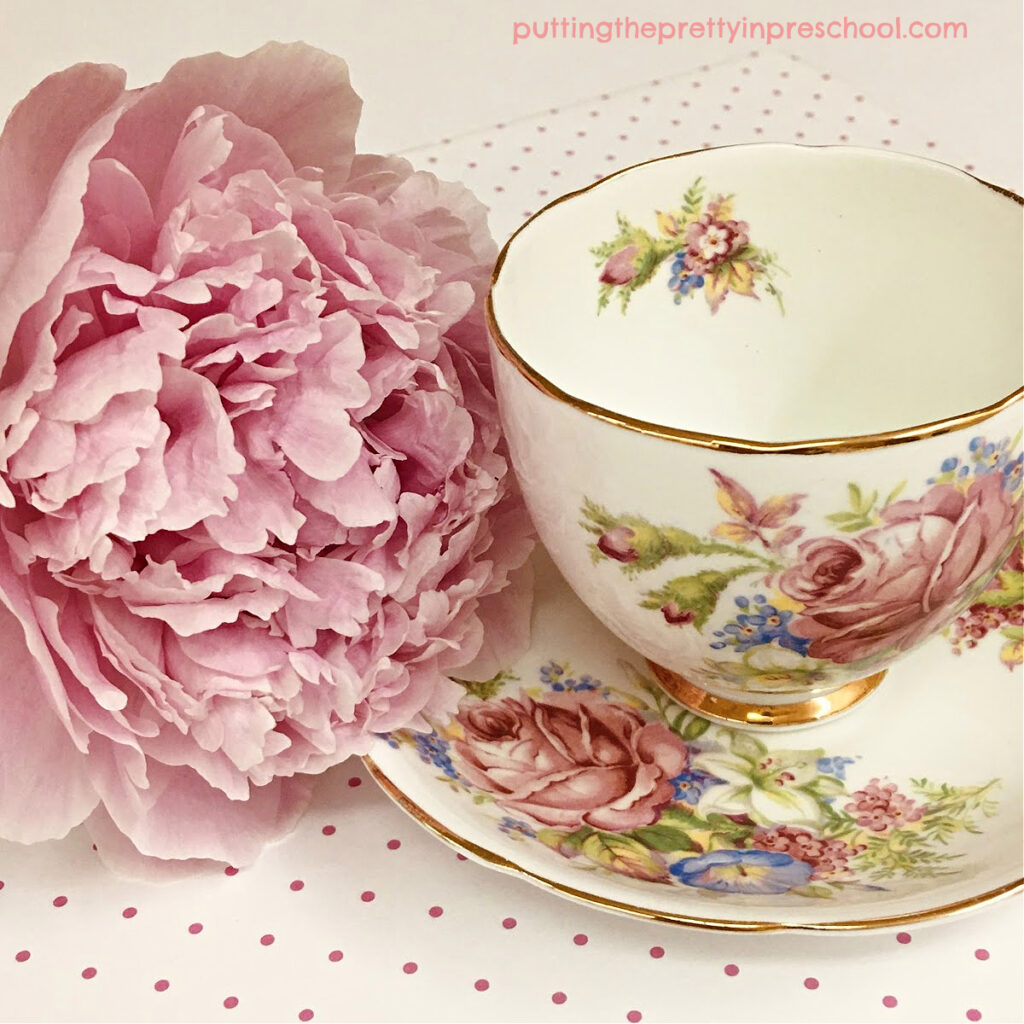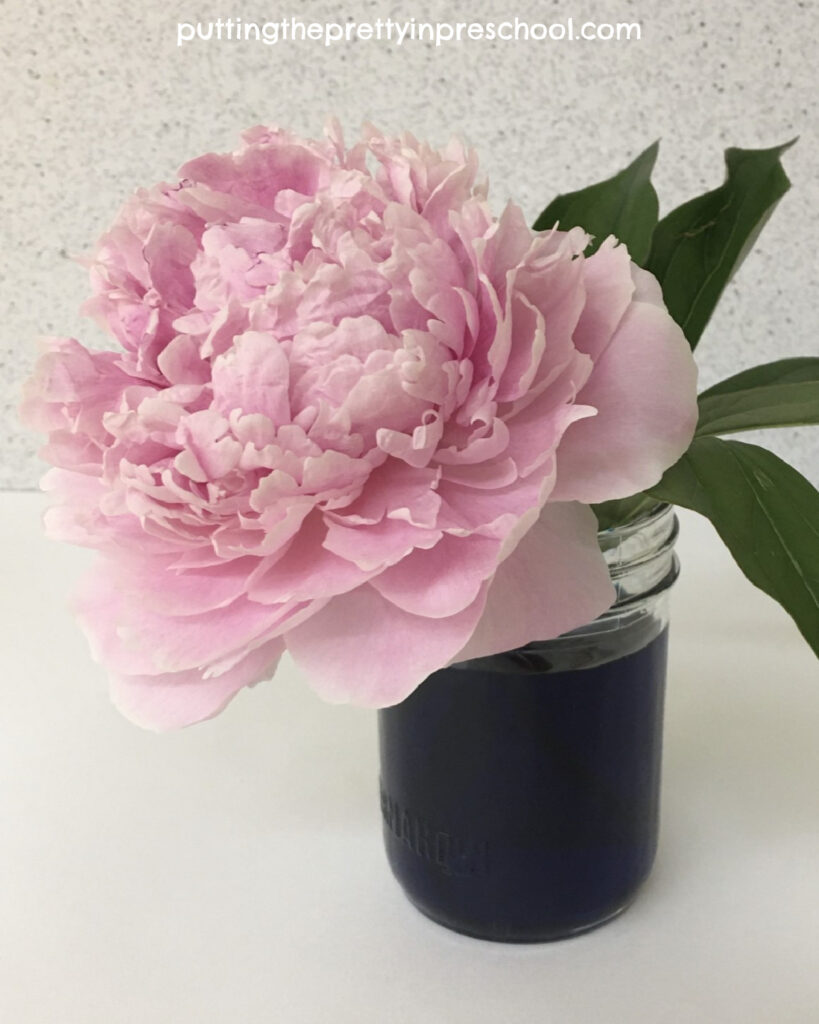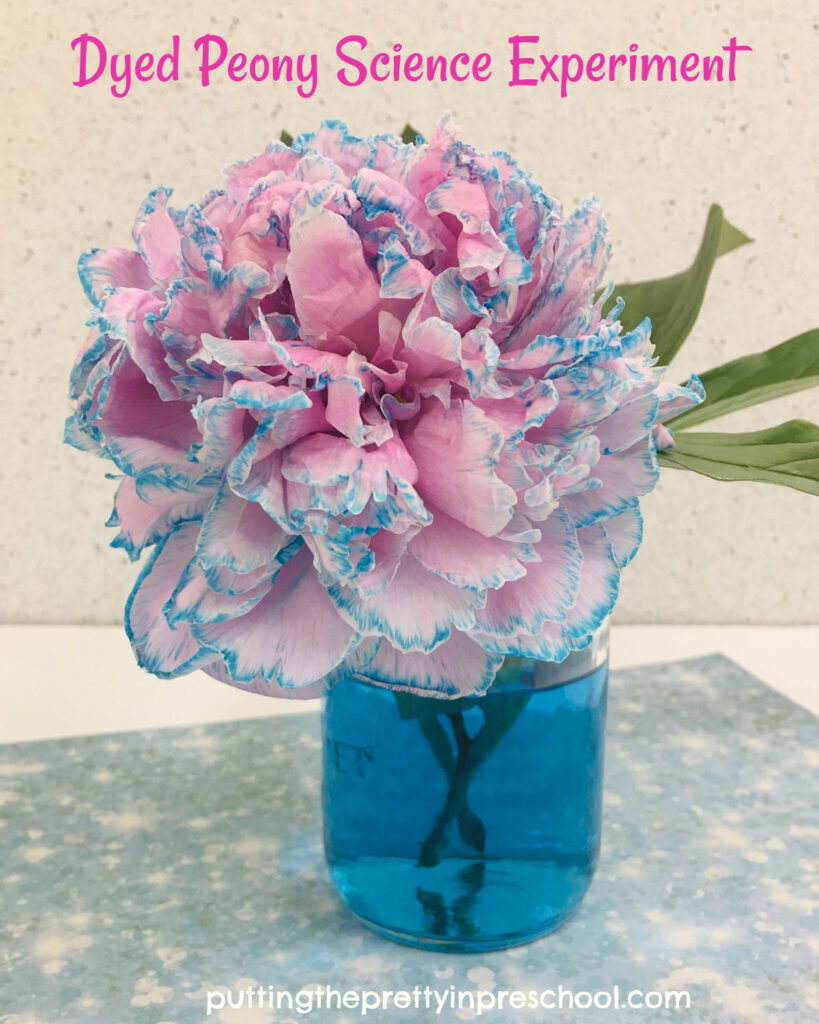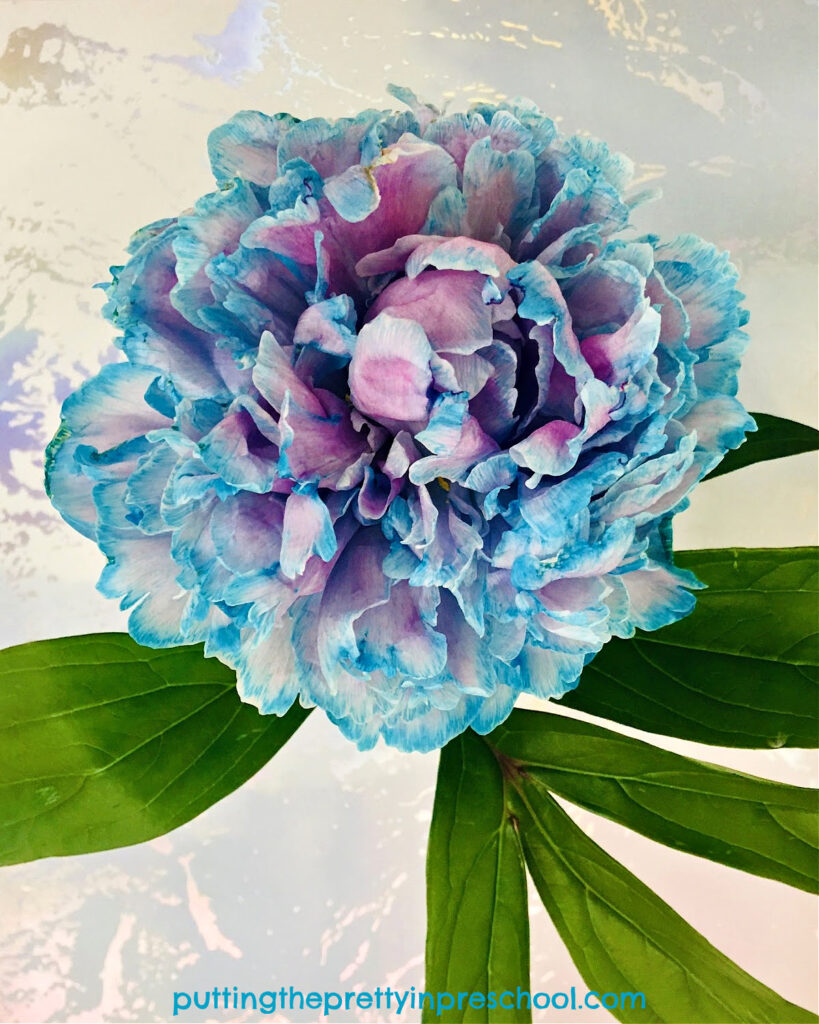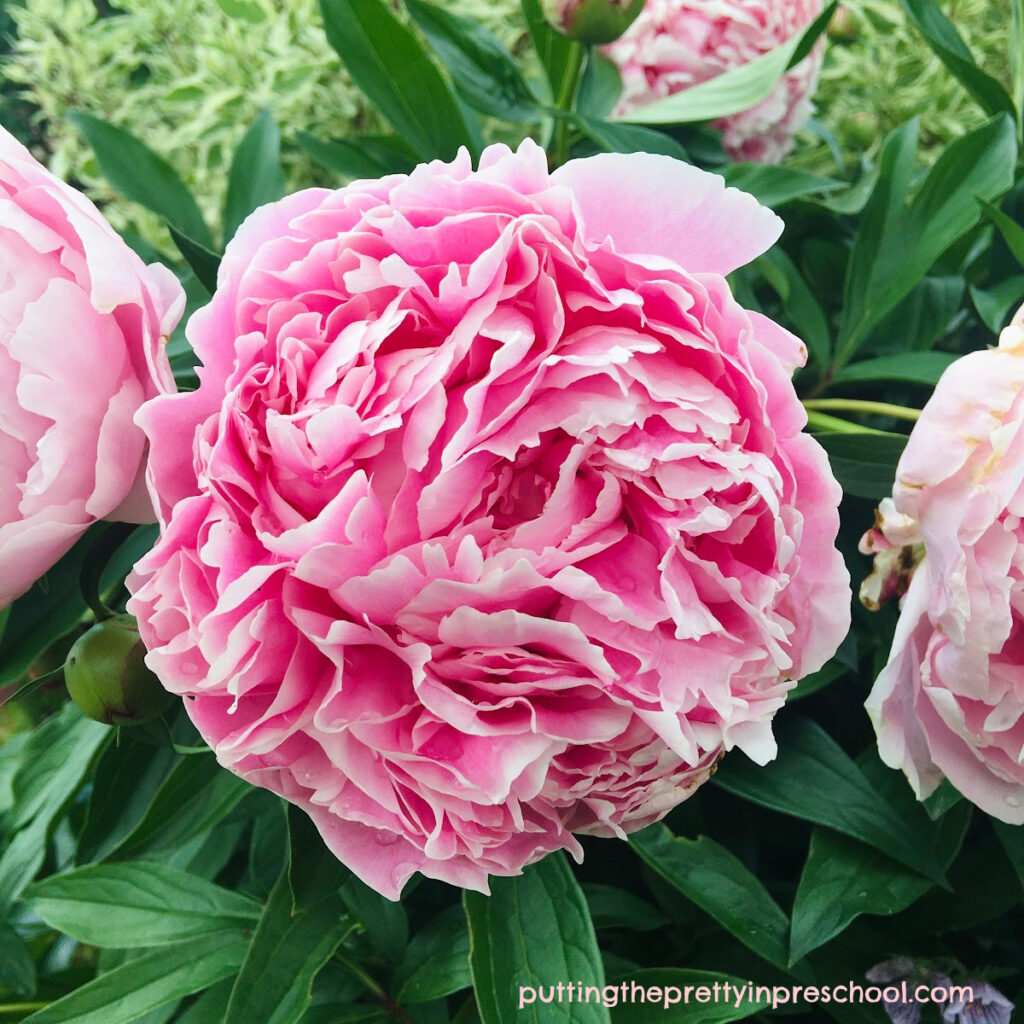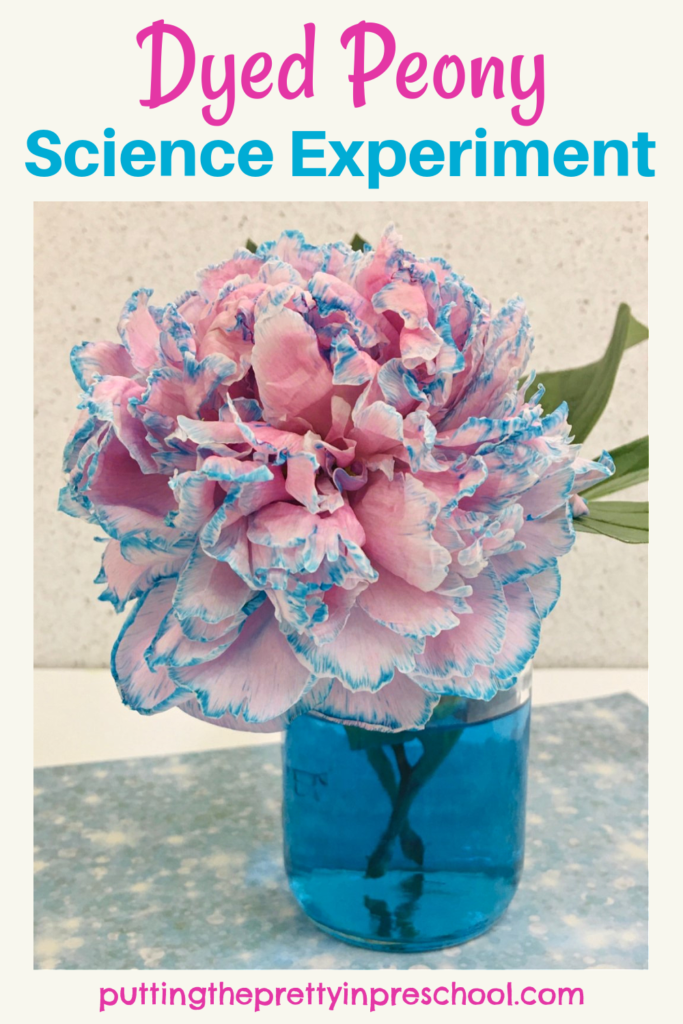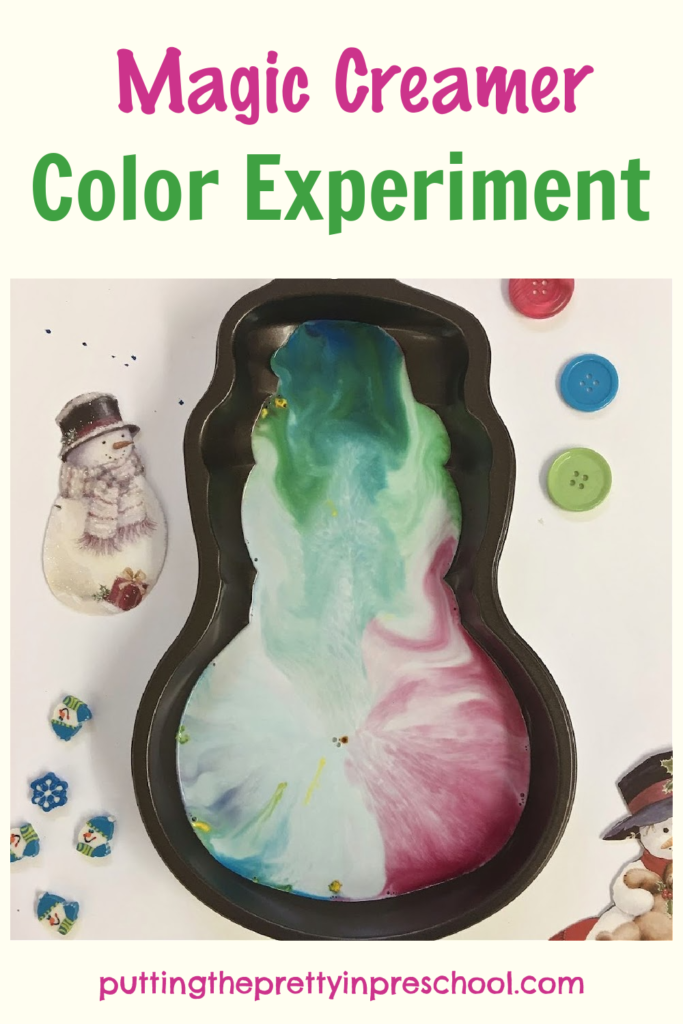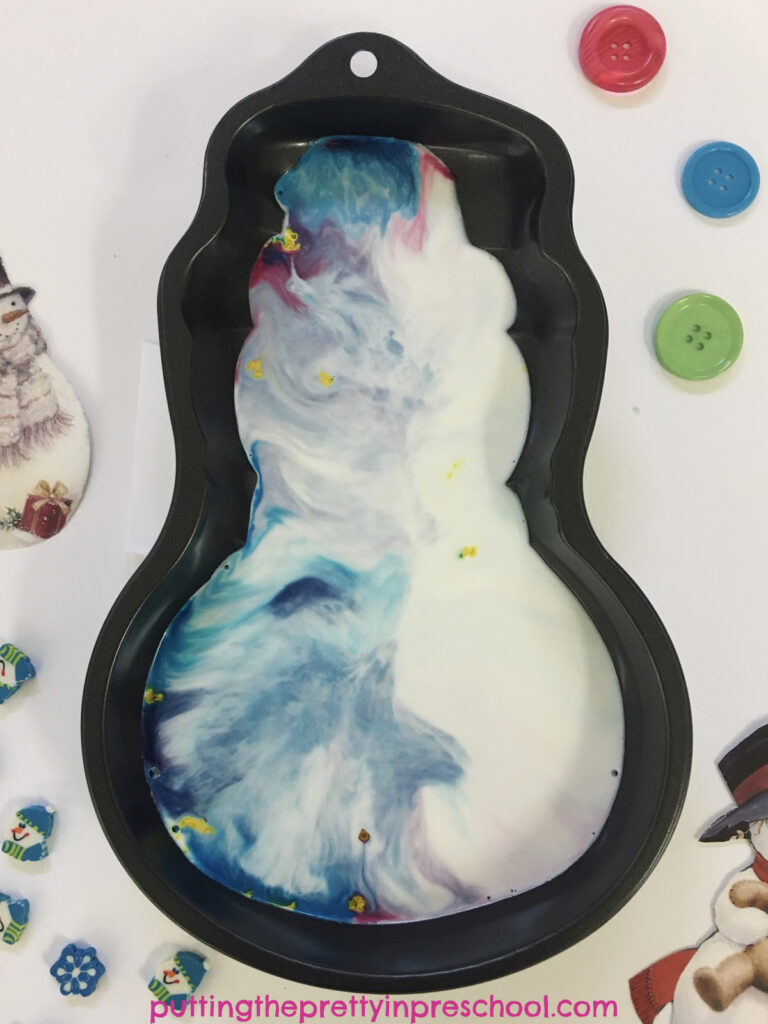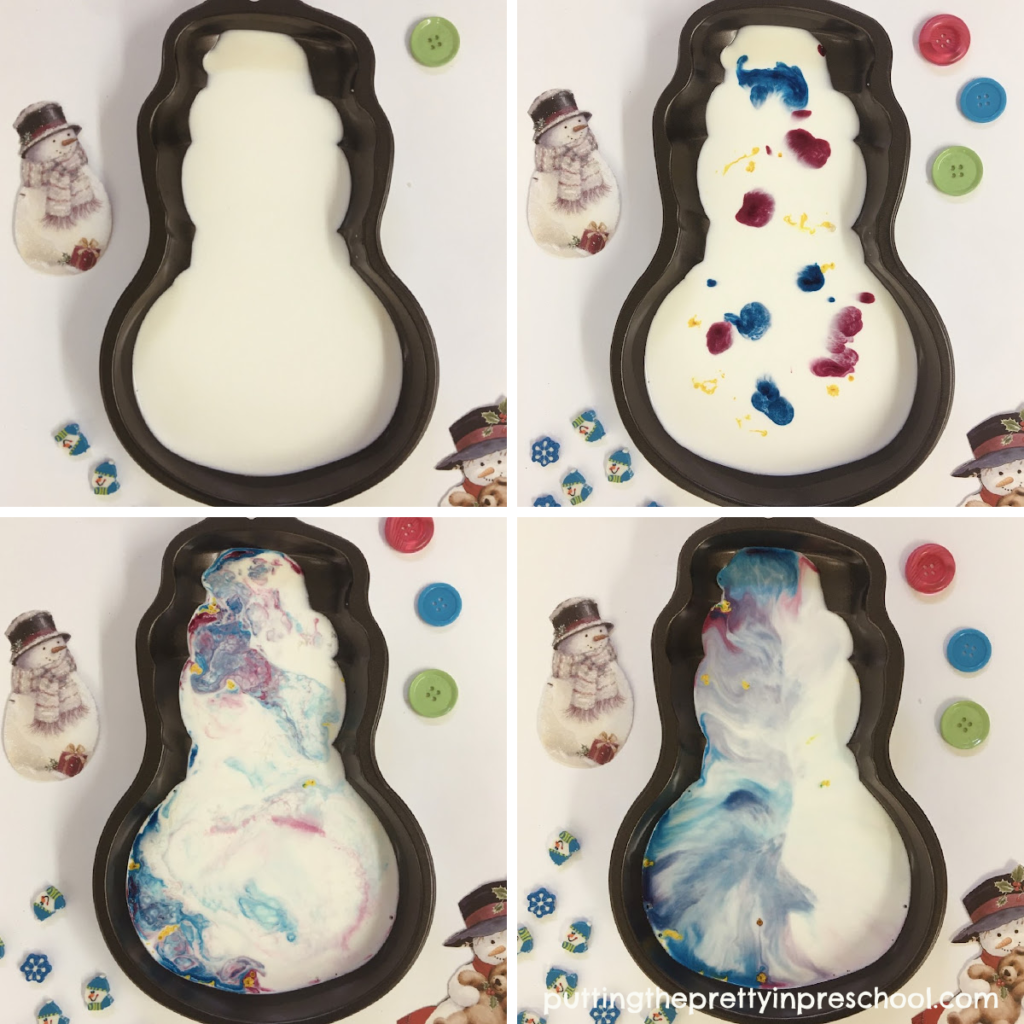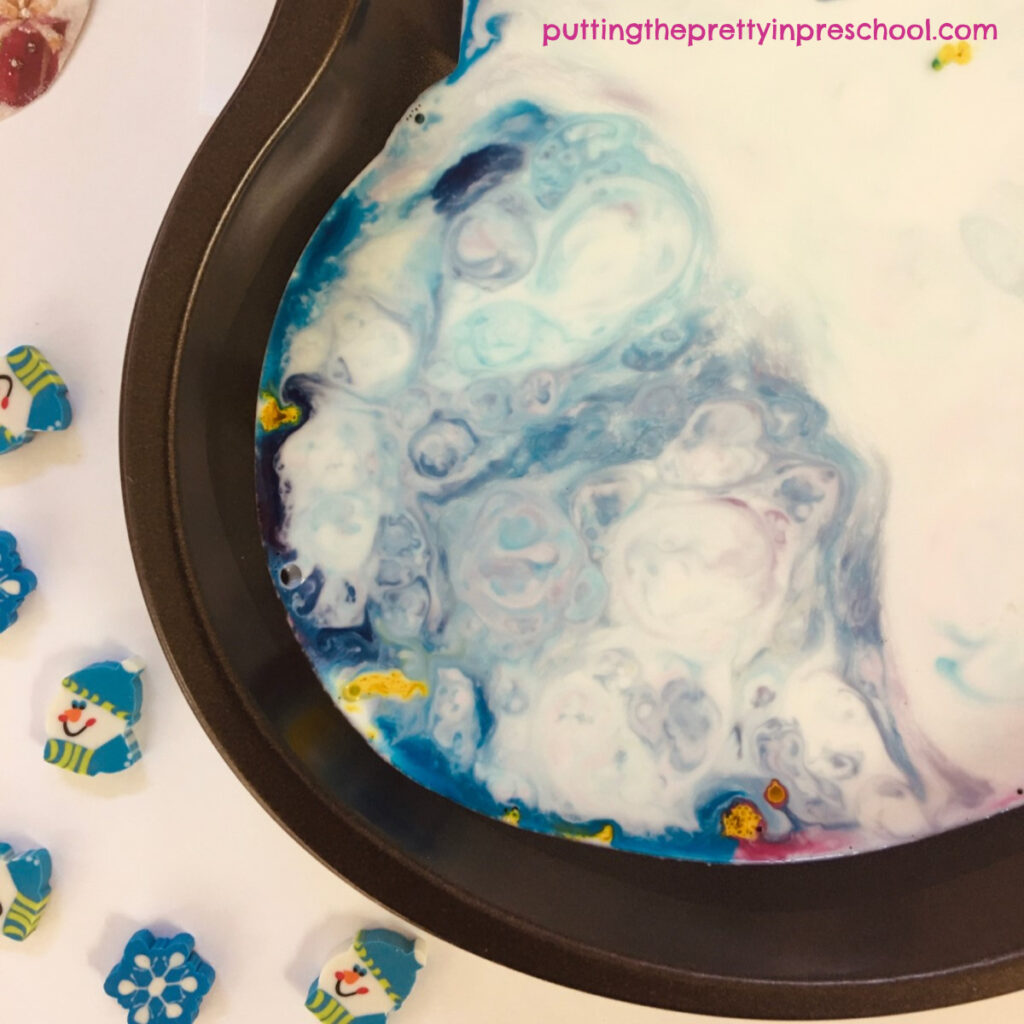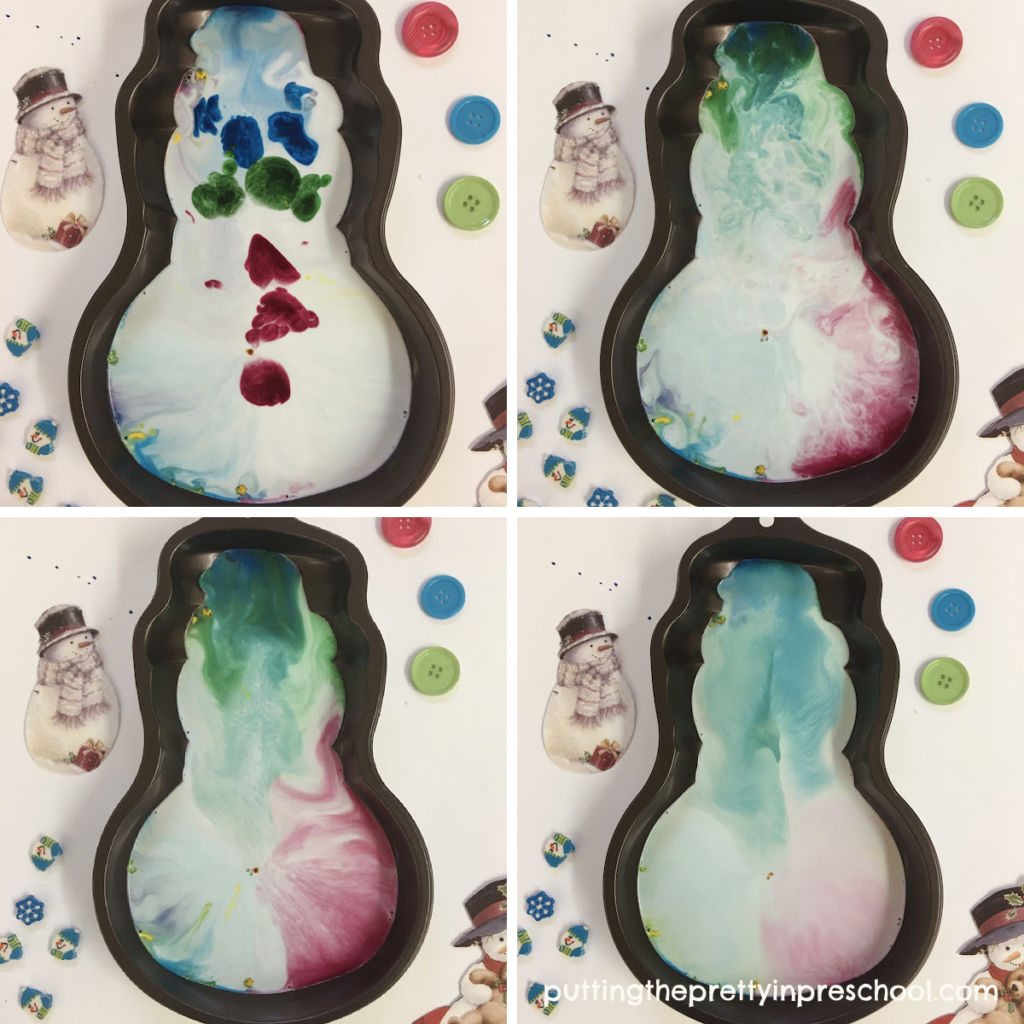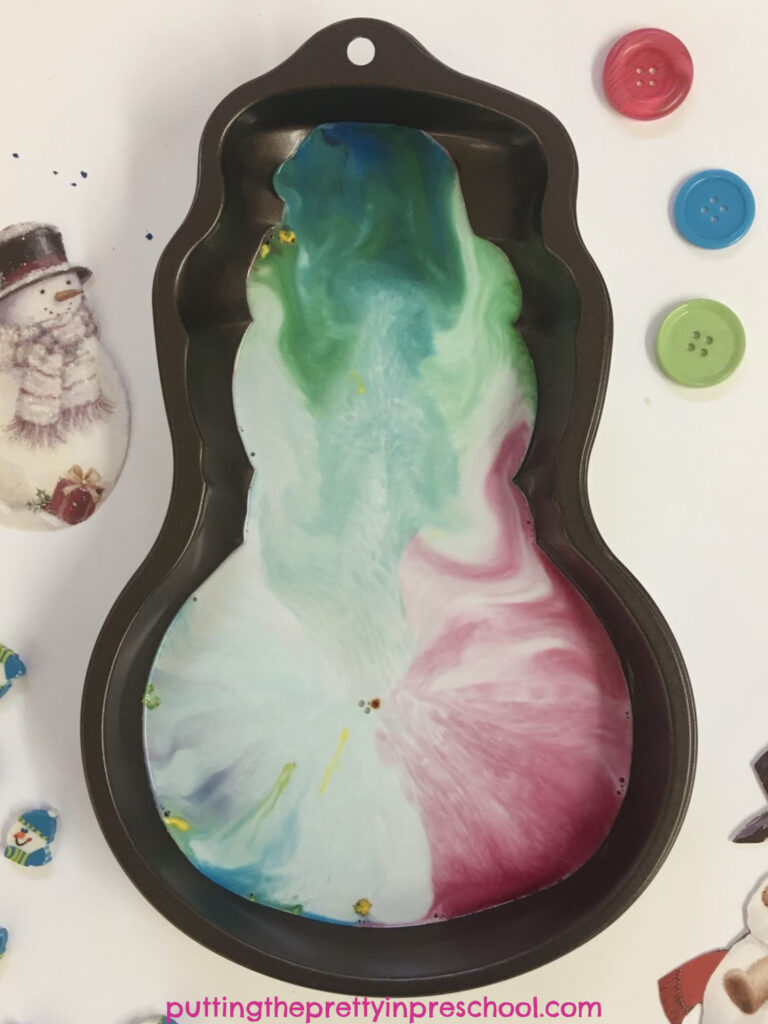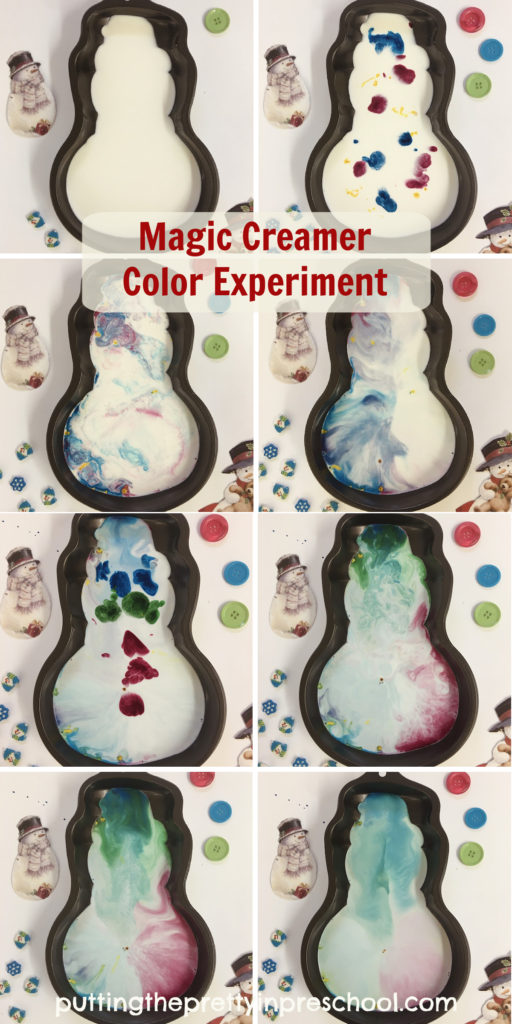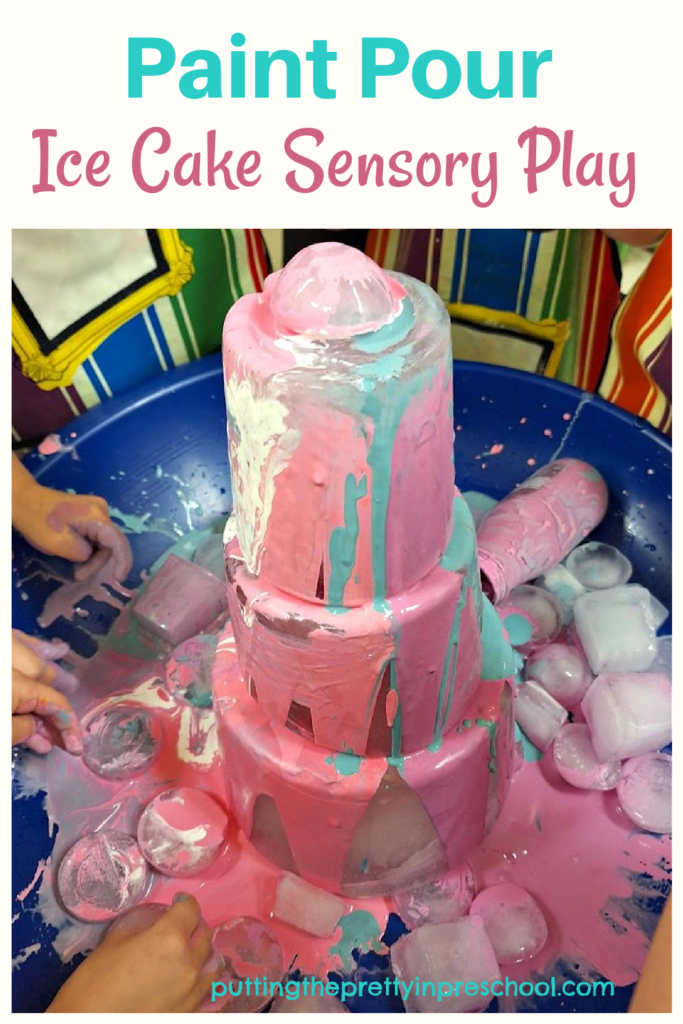
_______
Drip cakes are a popular trend at the moment. After seeing a fascinating drip cake-decorating video online, I thought it would be fun to try a similar technique with tempera paint and a three-tier ice cake. It turned out to be a paint pour ice cake sensory play invitation, and the icy activity was a huge success. I highly recommend giving it a try.
It is winter in my part of the world right now, and this paint pour sensory activity fits the season. But it would work any time of the year indoors or outdoors using of-the-moment seasonal colors.
_______
Follow me on Pinterest for more early learning ideas.
_______
Supplies To Collect
To set up a paint pour ice cake sensory activity, gather the following supplies:
- sensory tub
- small square coffee table
- waterproof tablecloth
- tarp
- round food storage containers in various sizes
- a variety of ice cube trays
- tempera paints in turquoise, pink, light purple, and white hues
- small soda or water bottles
- shovels
- toy dinosaurs
_______
Setting Up The Paint Pour Ice Cake Activity
This sensory invitation is easy from start to finish. The first thing to do is collect round food storage containers and gather all the ice cube trays you can find. Freeze water in them outdoors on a cold day or in a freezer to make ice. This will take about 24 to 48 hours.
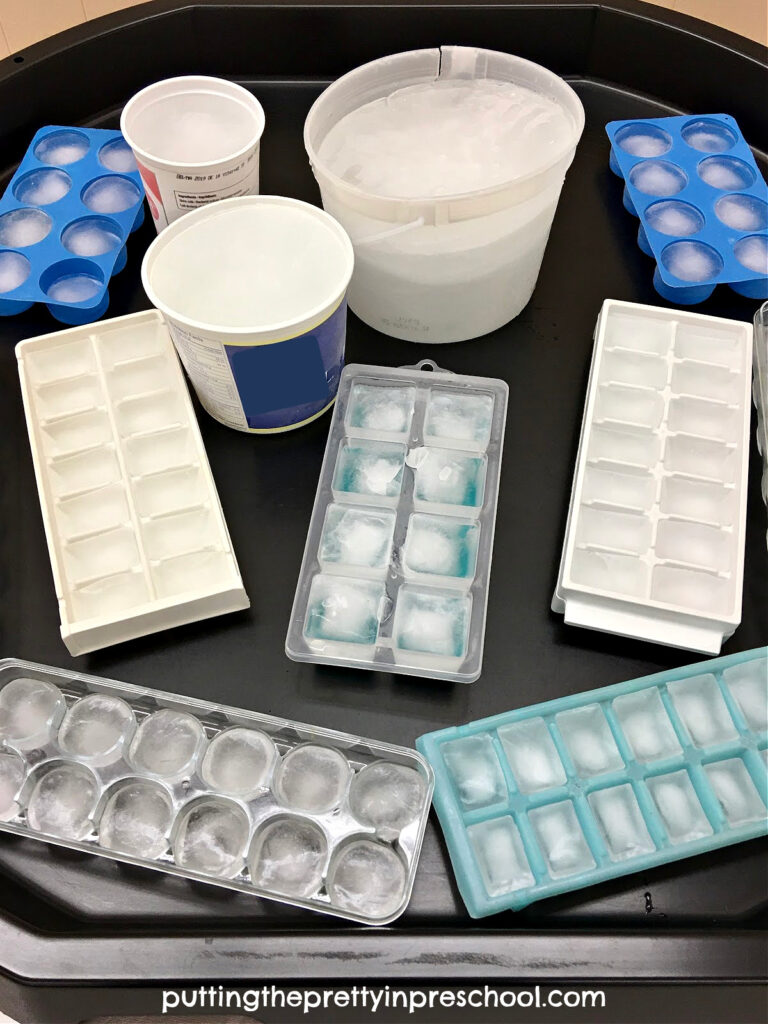
_______
Next, pour tempera paint in turquoise, pink, light purple, and white hues into clear bottles with narrow spouts. Small milk or soda bottles are perfect for this activity. Mix a little water into the paint colors to make them easy to pour.
Then cover an area of the floor with a tarp or large round waterproof tablecloth and set down a small coffee table.
Cover the table with a waterproof tablecloth and place a sensory tub on it. For the featured activity, I used an inexpensive saucer sled. It is just the right size to fit four to six little learners around it. An active world tray would be a fine alternative.
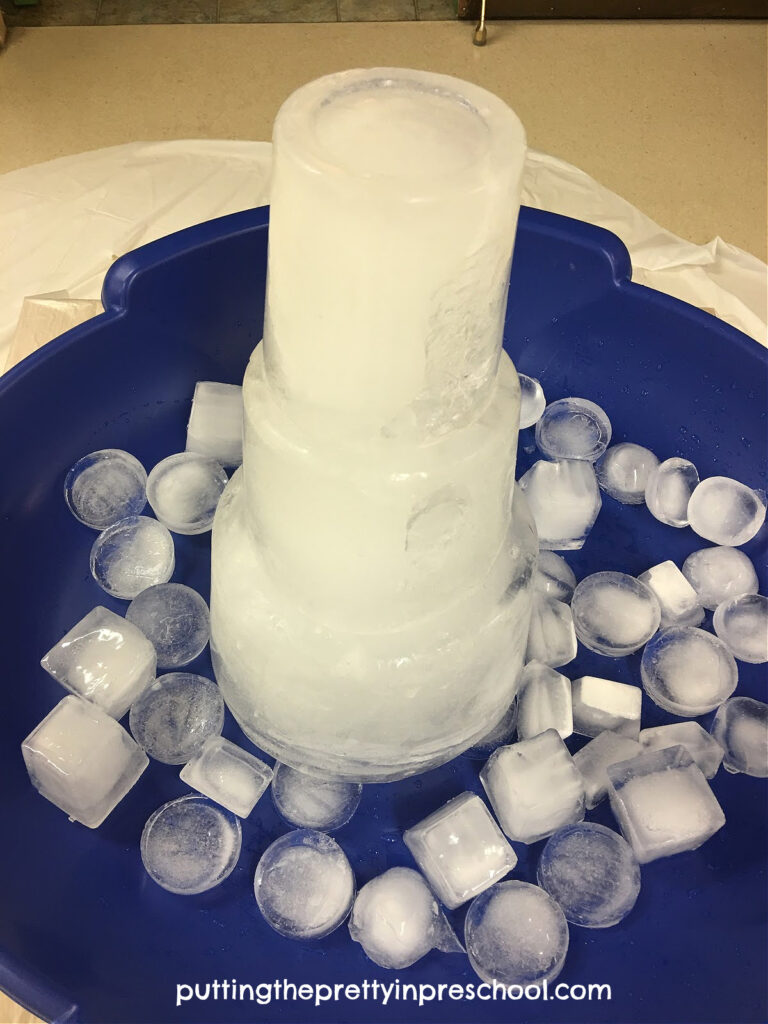
_______
When the ice shapes are frozen, stack the large cylindrical ones into a three-tier cake in the middle of the tub. Spread ice cubes in various sizes and shapes around the ice cake.
_______
Paint Pour Ice Cake Sensory Play
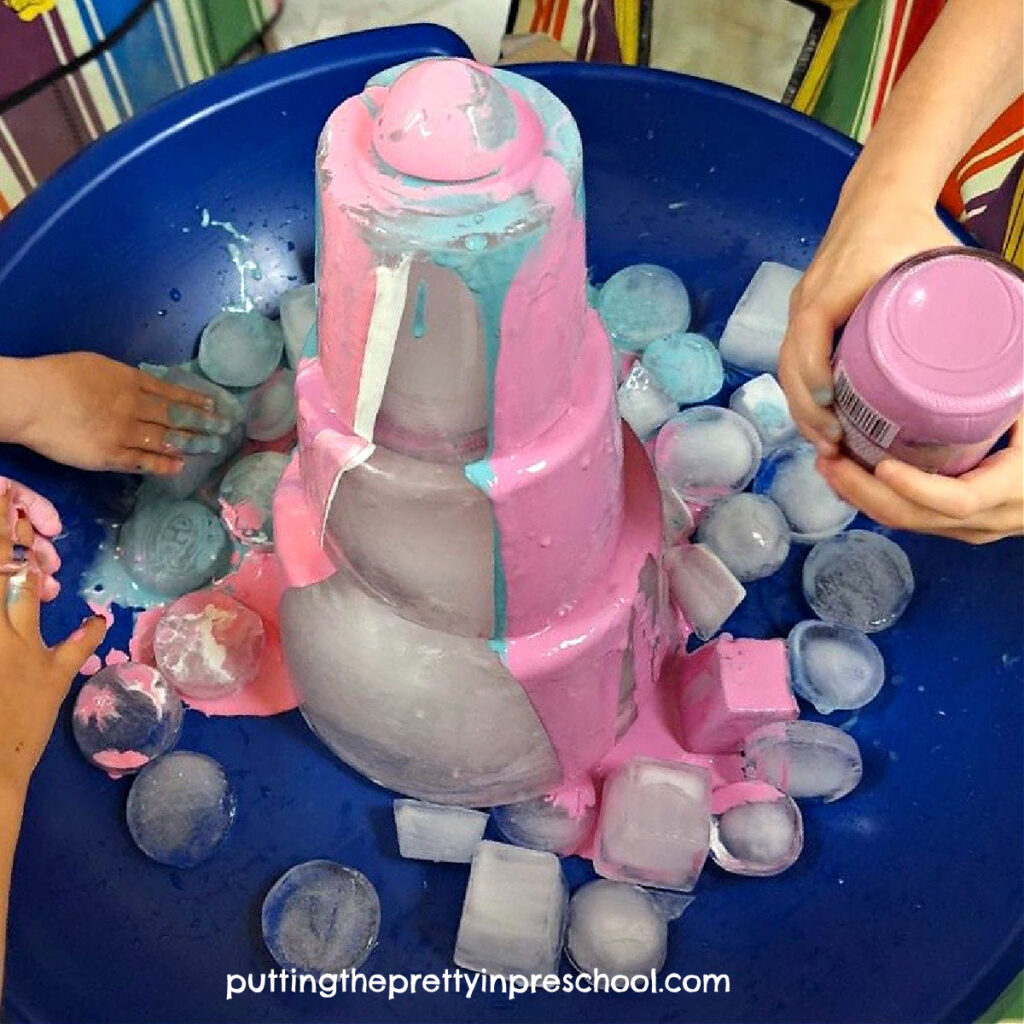
_______
When the ice cake sensory play invitation is all set up, invite little learners to gather around.
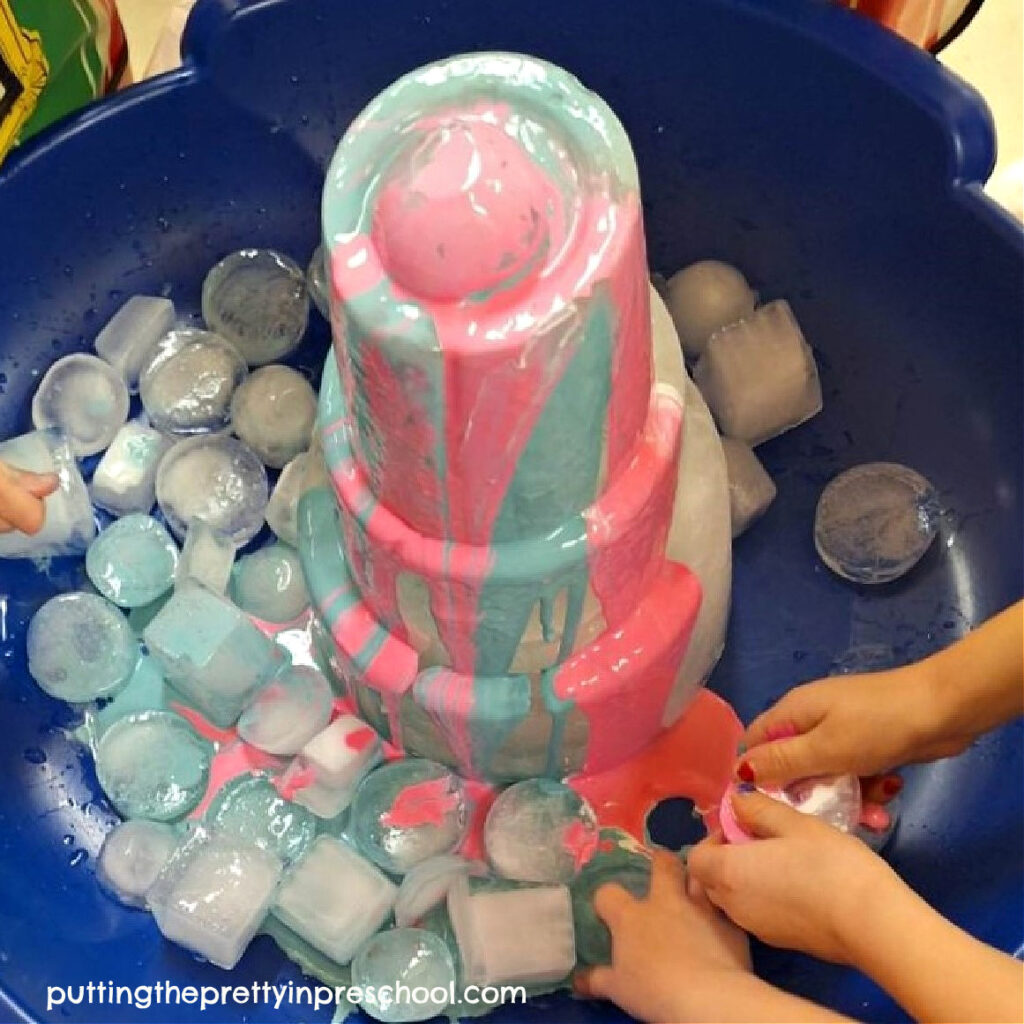
_______
Have your little charges take turns pouring paint from a bottle on top of the cake. The children will be enthralled by the dripping hues.
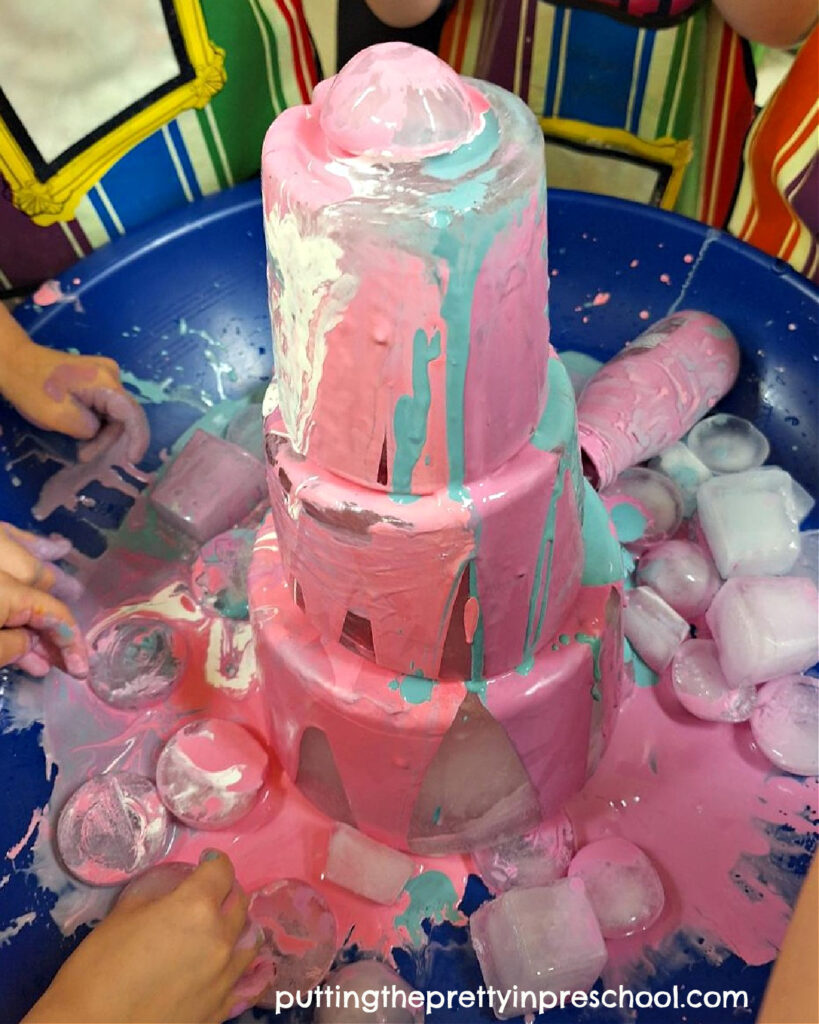
_______
After all the paint has been poured, include shovels and dinosaurs in the tub for added sensory play opportunities.
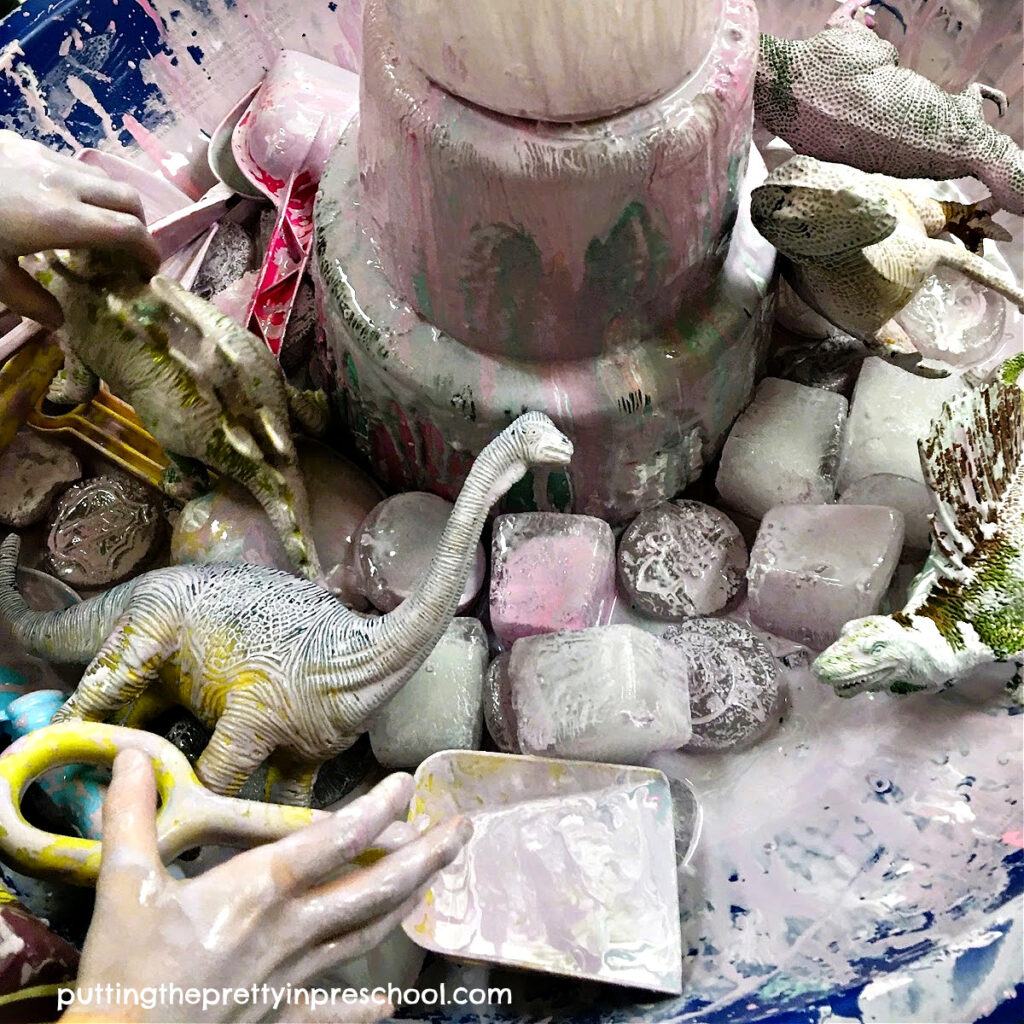
_______
The paint colors will eventually tone down and blend, allowing little learners to experience a color-changing science experiment.
_______
More Winter Sensory Play Activities
Kid’s Winter Wonderland Tablescape
LLama-Inspired Winter Sensory Bin
_______
[Read more…] about Paint Pour Ice Cake Sensory Play